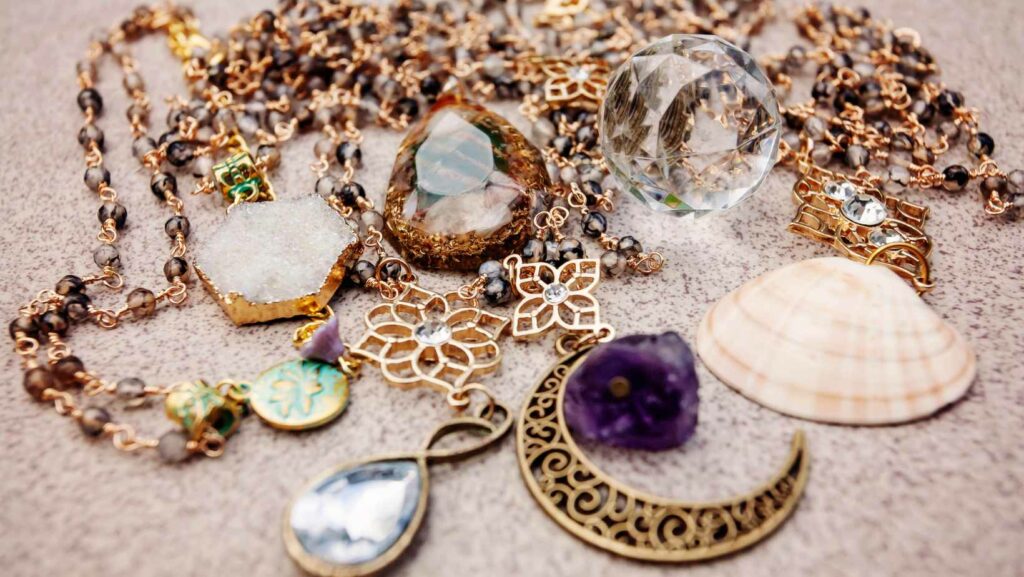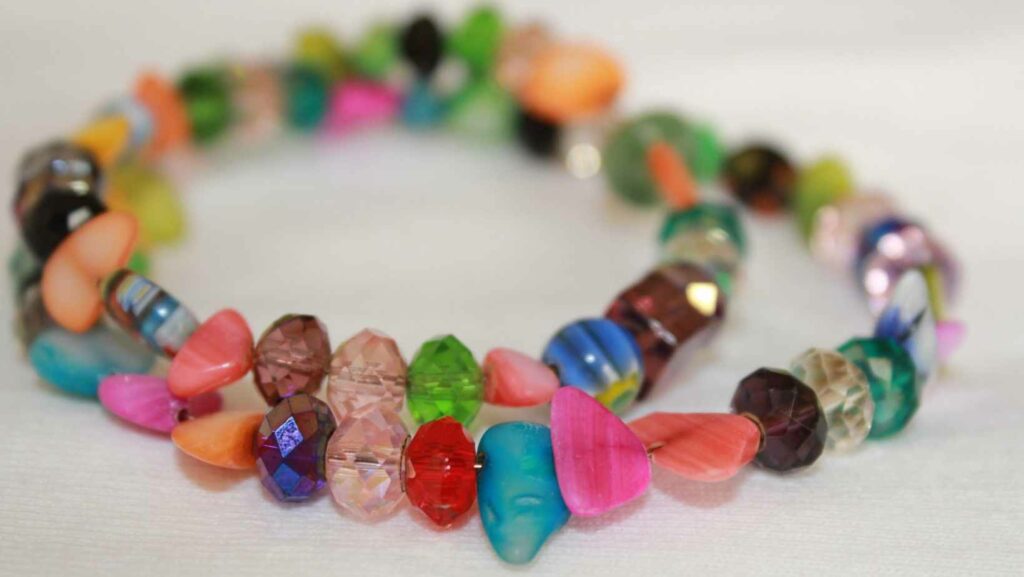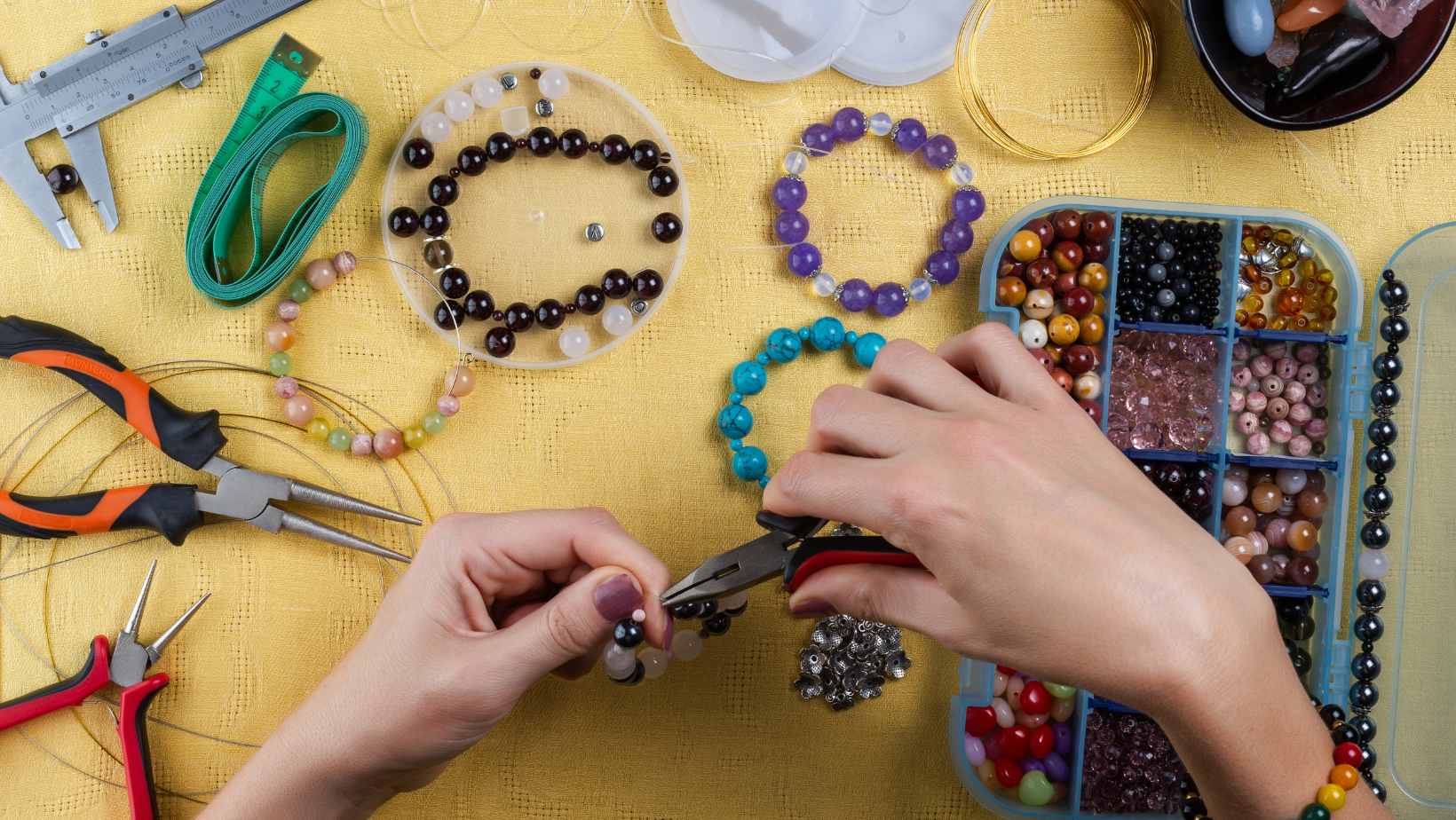Know your costs
You must know how much it costs you to make a piece of jewelry before you can price it. This includes the cost of the materials, the cost of your time, and any other miscellaneous costs associated with making the jewelry. Once you know your costs, you can start to price your jewelry.
Calculate the cost of materials
In order to price your beaded jewelry, you need to calculate the cost of materials. This includes the cost of beads, wire, findings, and any other materials you use. To do this, simply add up the cost of all the materials you used to make the piece. Once you have the total cost of materials, you can move on to calculating your time and labor costs.
Calculate the cost of your time
The first step in knowing how to price your beaded jewelry is calculating the cost of your time. This includes the time it takes you to design the piece, gather the materials, and actually creating the jewelry. You should also factor in the time it takes to package and ship the piece. To calculate an hourly rate, take your total costs for the year (for supplies, tools, etc.) and divide it by the number of hours you spends making jewelry. Then add an hourly rate for your time. This will give you a base price for your jewelry.

Consider your target market
You’ve finally completed your first set of beaded earrings, a bracelet, and a necklace. You’re ready to start selling your handmade jewelry, but how do you price it? You don’t want to undervalue your work, but you also don’t want to overprice and scare away potential customers. Here are a few things to consider when pricing your beaded jewelry.
What is the average price for similar jewelry
When you are determining how to price your handmade beaded jewelry, it is important to consider your target market. Beaded jewelry can be priced anywhere from a few dollars to hundreds or even thousands of dollars. The key is to find the right balance between what your target market is willing to pay and what will still allow you to make a profit.
To determine what the average price is for similar jewelry, do some research online and in stores. Take note of the materials used and the time it takes to make the piece. You can also ask other jewelry artists for advice on how they price their work. Once you have a good idea of the going rate, you can then start to set your own prices.
It is important to remember that your prices should not be too low or too high. If they are too low, people may think that your jewelry is not worth much and will not bother buying it. If your prices are too high, you may scare people away and miss out on potential sales. Instead, try to find a happy medium that will attract buyers without pricing yourself out of the market.
What is your target market willing to pay
When considering how to price your handmade beaded jewelry, it’s important to take your target market into account. After all, it’s your target market that will ultimately determine how much they’re willing to pay for your products.
There are a number of factors you’ll need to consider when determining your target market’s willingness to pay, including the perceived value of your products, the average income of your target market, and the level of competition in your particular niche.
Perceived value is perhaps the most important factor to consider when pricing your handmade beaded jewelry. After all, even if your target market has a high income, they’re not going to be willing to pay top dollar for something they don’t perceive as being worth the price. When pricing your jewelry, be sure to take into account the materials you’re using, the time and effort involved in creating each piece, and any unique or special features that make your jewelry stand out from the competition.
The average income of your target market is also an important consideration when setting prices for your handmade beaded jewelry. Obviously, the higher the income of your target market, the more they’ll be willing to spend on luxury items like jewelry. However, even if your target market has a relatively low income, there are still ways to price your jewelry so that it’s affordable without devaluing your work. For example, you might consider offering discounts for bulk purchases or creating lower-priced lines of jewelry specifically for budget-conscious shoppers.
Finally, you’ll also need to take into account the level of competition in your particular niche when pricing your handmade beaded jewelry. If you’re competing against mass-produced jewelry from big-name retailers, you’ll need to make sure that your prices are competitive in order to attract customers. However, if you’re catering to a more niche market with fewer buyers but less competition, you can afford to charge slightly higher prices and still make sales.

Determine a fair profit margin
When you’re first starting out, it can be difficult to know how to price your beaded jewelry. You want to make sure you’re making a profit, but you don’t want to scare away customers with high prices. Here are a few tips to help you determine a fair profit margin for your beaded jewelry.
What is a reasonable profit margin for your industry
There is no surefire answer to the question of what is a reasonable profit margin for your industry. Every business is different, and therefore has different overhead costs, competition, etc. that will affect their bottom line. However, there are a few general guidelines you can follow in order to make sure you’re not under-pricing of overpricing your products.
First, take a look at your competition. If they are all selling similar products for around the same price, it’s likely that that is the going rate for your area/industry. You don’t want to price yourself too far below the competition, or you’ll appear cheap and unprofessional; however, you also don’t want to price yourself too high, or you’ll have a hard time making sales.
Next, consider your own costs. How much does it cost you to make each product? Make sure you are accounting for all of your materials, labor, shipping, etc. When calculating your costs, also be sure to factor in any bulk discounts you may receive on materials (if you buy in large quantities). Once you know your costs, add in a fair profit margin – enough to cover any overhead costs like rent/mortgage, utilities, marketing expenses, etc., and also leave room for growth and expansion. A good rule of thumb is to aim for a profit margin of 50%.
Finally, consider any special circumstances that may warrant a higher or lower price point. For example, if you are selling a luxury item or something that is in high demand (and therefore has less competition), you may be able to charge more than the going rate. Alternatively, if you are selling an item that has a very low profit margin but is essential to customers in your industry (think: printer ink cartridges), you may need to charge less in order to stay competitive and encourage customers to buy from you.
By following these guidelines, you should be able to determine a fair and reasonable profit margin for your business.
How to price handmade beaded jewelry
There are really only two ways to pricing your beaded jewelry. You can either charge by the hour, or you can come up with a fair profit margin. If you charge by the hour, then you need to keep track of how long each piece takes you to make so that you can price it accordingly. This can be difficult to do if you’re just starting out, because it’s hard to know how long each piece will take you. The other option is to come up with a fair profit margin. To do this, you’ll need to figure out how much it costs you to make each piece of jewelry, and then add a percentage on top of that for your profit. For example, if it costs you $10 in supplies and takes you 1 hour to make a piece of jewelry, then you could charge $25 for that piece (which would give you a 50% profit margin).
Which method you choose is up to you, but I would recommend using the profit margin method when first starting out. It’s easier to keep track of your costs this way, and it will help you determine a fair price for your jewelry.
Set your prices
You’ve put countless hours into creating beautiful beaded jewelry – now it’s time to price it! When pricing your beaded jewelry, it’s important to keep a few things in mind. First, you’ll need to account for the cost of materials. Second, you’ll need to factor in your time and labor. Third, you’ll need to consider your competition. Lastly, you’ll need to set a price that you’re comfortable with.
Decide on a pricing strategy
Decide on a pricing strategy. There are 3 common ways to price your jewelry:
1. Cost-plus pricing – You add a markup to the cost of materials and labor to reach the price you want.
2. Competitive pricing – You compare your prices to those of similar businesses and adjust accordingly.
3. Price skimming – You set high prices when you first introduce a product, then lower them over time as demand decreases.
Choose the pricing strategy that makes the most sense for your business goals.
Choose a pricing method
Pricing handmade beaded jewelry can be tricky. You don’t want to charge too little and leave money on the table, but you also don’t want to charge too much and watch your jewelry sit unsold. Fortunately, there are some tried and true methods for pricing beaded jewelry that will help you find the sweet spot.
The first step is to choose a pricing method. There are two main ways to price handmade jewelry: by the piece or by the hour.
Pricing by the piece is the simpler of the two methods. To price by the piece, simply calculate your costs (materials, time, overhead) and add a reasonable profit margin. For example, if your costs add up to $20 and you want to make a 40% profit, you would charge $28 per piece.
Pricing by the hour is a bit more complicated, but it can be helpful if you’re selling one-of-a-kind or custom pieces. To price by the hour, start by calculating your costs (materials, overhead) and add a reasonable profit margin. Then, figure out how long it takes you to make the piece from start to finish. Finally, multiply your hourly rate by the number of hours it takes to make the piece. For example, if your costs add up to $20, you want to make a 40% profit, and it takes you 2 hours to make a piece from start to finish, you would charge $56 per piece (($20 + 40% profit) x 2 hours).
Once you’ve chosen a pricing method, it’s time to start setting prices for your jewelry. Use these tips as a guide:
– Look at comparable pieces when setting prices for similar items
– Take into account materials used and difficulty of construction when setting prices for one-of-a-kind or custom pieces
– Offer discounts for multiple purchases
– Consider running sales or promotions periodically to move inventory
Review your prices
You have completed your beaded jewelry masterpiece. Now, you need to price it to sell, but where do you start? It can be difficult to price handmade jewelry, but there are a few tips you can follow to help you determine a fair price for your work. Review your costs, research the market, and consider your time investment to come up with a price that works for you and your buyers.
Evaluate your prices regularly
It’s important to keep an eye on your price point, especially as the market and costs fluctuate. Take some time every few months to evaluate what you’re charging for each piece and make sure it’s still in line with similar pieces from other artists as well as the cost of materials.
If you find that your prices are too low, consider raising them gradually over time so you don’t alienate your existing customer base. On the other hand, if your prices are too high, you may want to lower them to be more in line with the competition.
Whatever you do, be sure to communicate any changes to your prices clearly to your customers so there are no surprises.
Make adjustments as needed
Pricing your beaded jewelry can be a tricky business. You want to charge enough to make a profit, but not so much that no one will buy your jewelry. The best way to find the right price is to start with a base price and then adjust it as needed.
To find your base price, start by adding up the cost of all the materials you used to make the piece of jewelry. This includes the cost of the beads, the wire, the findings, and any other materials you used. Once you have that number, add on an additional charge for your time and labor. This labor charge can be a flat rate per piece or an hourly rate multiplied by the number of hours it took you to make the piece.
Once you have your base price, you can then adjust it based on a variety of factors. If you are selling to a local market, you will need to factor in things like competition and shipping costs. If you are selling online, you will need to consider things like credit card processing fees and website hosting costs. You should also consider discounts for bulk purchases and wholesale orders.
By taking all of these factors into account, you can arrive at a fair price for your beaded jewelry that will allow you to make a profit while still meeting customer demand.



